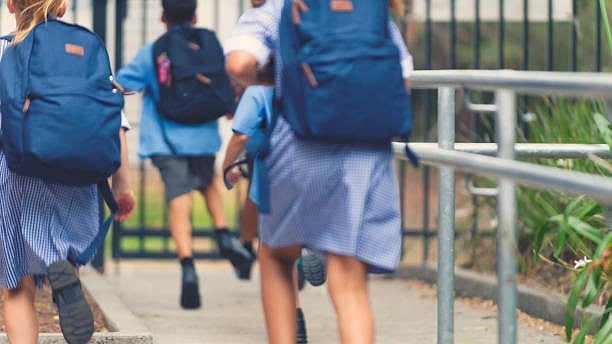
Image for representation.
Credit: iStock Photo
Excursions are among the most cherished memories of school life. In earlier times, excursions and picnics were an integral part of the academic calendar. Today, however, many schools avoid organising excursions for various reasons.
Last week, a tragic incident occurred on the Murdeshwar coast, where four 15-year-old girls from a school in Kolar drowned in the rough sea. Following the incident, the school principal was suspended, and five guest teachers who accompanied the students were dismissed. As is customary, an inquiry has been ordered.
Such tragedies often lead to temporary public outcry and media coverage. However, they are quickly forgotten by the public, while the affected families and the school suffer long-lasting emotional and reputational damage.
Two years ago, a similar tragedy struck a school excursion group in Kerala, resulting in the death of five children and a teacher. While an inquiry and guidelines followed, their implementation and impact remain unclear.
Excursions, per se, are a valuable part of education and a wonderful source of knowledge, offering students experiential learning and exposure to the world beyond the classroom. However, when things go wrong, schools face severe repercussions, including legal battles and the burden of compensating families, often amounting to several lakhs of rupees. The trauma and ordeal last for several years.
Due to these risks, many schools avoid excursions altogether. Elite schools may organise foreign tours through private operators, catering primarily to affluent families. Middle-class parents who can afford it may take their children on trips independently. However, most teenagers prefer travelling with their friends, as school excursions provide a unique blend of fun, camaraderie, and learning under the guidance of experienced teachers and guides.
What about students from less privileged backgrounds? School excursions are often the only opportunity for children from such backgrounds to explore the world. Authorities should support such schools proactively with logistical and financial assistance to ensure safe and enriching trips.
The key question is: Can we make excursions safe? The answer lies in adhering to safety guidelines issued by various departments and regulatory bodies.
Schools must adopt strict protocols when organising an excursion to prevent mishaps.
Buses and drivers must be certified fit by the regional transport officials before every excursion.
Speed governors should be installed in the buses, and authorities must specify safe speed limits. The school authorities should comply with them.
Buses should have bars across the windows to prevent students from sticking out their hands or heads.
Emergency doors, GPS, CCTV, and fully equipped first-aid kits are essential.
Night travel by buses should be banned for excursion groups. It is often done to save expense, but they make two mistakes: They deny sightseeing to children and expose them to the risk of serious accidents. More such accidents are reported at night and in the small hours of the day.
There should be experienced teachers accompanying the students in a 1:10 ratio. The total number in a group should not be more than the seating capacity of the bus. Students should be divided into batches of 10 under a teacher during the entire trip. Female teachers with sufficient experience should be included, based on the number of girls in the group.
Drowning incidents alarmingly common. Many students, inexperienced in swimming, venture into dangerous waters, risking their lives. In the recent Murdeshwar tragedy, the students reportedly ignored lifeguards’ warnings. Coastal Karnataka witnesses frequent drowning incidents, highlighting the need for stricter preventive measures.
Mobile phones are yet another cause of many mishaps. Cliffs and precipices are favourite vantage points for selfies. But they are also beset with serious risks. Like water bodies, selfies at such locations should be a strict no-no during excursions.
Many such safeguards should be part of every excursion. Most importantly, the students and the teachers should undergo an orientation by an expert before they set out. The entire group must follow a leader who must be a capable teacher. Discipline and safety must be the watchword. Guided freedom makes for a safe and pleasant excursion.
(The writer is Director, Little Rock Group of Institutions, Udupi)